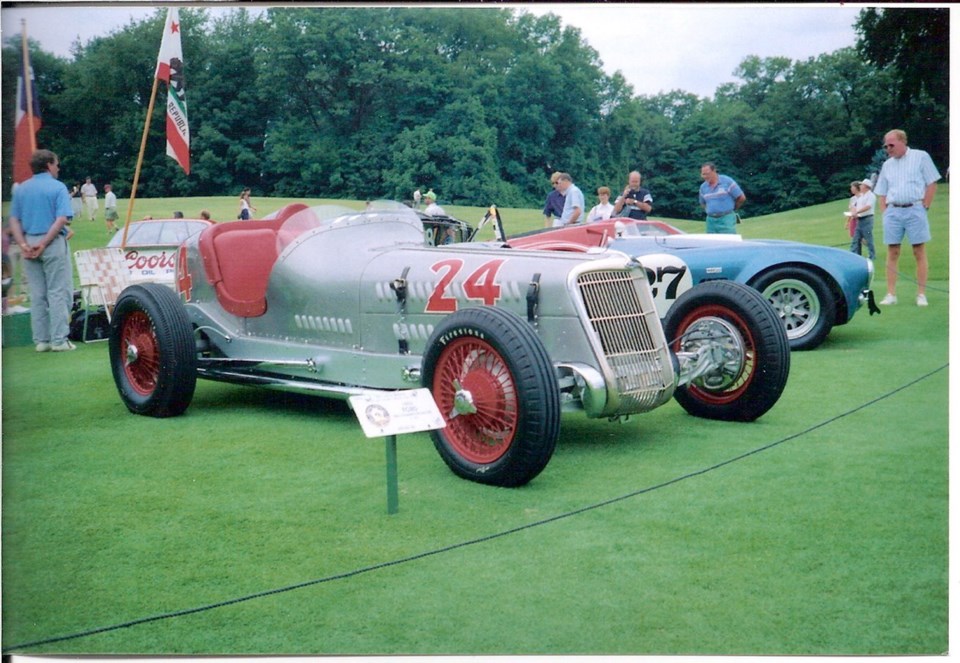As the 1920s were coming to a close, the officials of the Indianapolis 500 race were becoming alarmed at the spiralling cost of racing. The fast and exotic precision-built, jewel-like cars produced by Harry Miller and the Duesenberg brothers were becoming too expensive for many participants. The result was a dwindling field of contestants.
To counteract this condition, the American Automobile Association contest board implemented new rules for 1930 to attract stock cars. It allowed engines up to 6.0 litres (366 cu in.). It also prohibited more than two valves per cylinder and supercharging on four-stroke engines. Two seats were required. Racing purists referred to this derisively as the “junk formula.”
There were protests from the rich established racers with their expensive equipment, but the stock-market crash in 1929 that rang in the Depression proved this new formula was right for the times.
About half the Indy racers in the early 1930s were modified stock cars such as Studebakers, Stutzes, Hudsons, Grahams, Reos and Chryslers. They were regular production cars with fenders, headlights, bumpers, etc., removed. The engines were hopped up to sometimes twice their original output. Winning with these almost-stock cars was a real advertising bonanza for automobile manufacturers.
The Ford Motor Co.’s V-8 introduced in 1932 brought eight-cylinder smoothness to the popular-priced field. It developed a reputation as an easily hopped-up performance engine on the road and stock car tracks.
Racing enthusiast and promoter Preston Tucker saw the Ford V-8’s potential for racing in the Indy 500. He contacted race-car builder Harry Miller, who had just declared bankruptcy, and they agreed to prepare and enter a team of Ford V-8-powered cars in the 1935 Indianapolis 500.
This was the Preston Tucker who would gain fame following the Second World War when he attempted to manufacture a radical new car with a rear-mounted, modified, flat-six helicopter engine. Only 51 were built, but it gave Detroit’s automakers a scare.
For his Indy venture, Tucker amassed enough capital to have Miller and crew construct a batch of 10 special Ford V-8 racers in his Detroit shop. Assistance from Ford Motor Co., said to be in excess of $200,000, was slow in coming; by the time it finally arrived, Miller had only about five months to complete the cars.
The Miller-Ford racers were quite advanced. Since Miller was a front-wheel-drive specialist, he reversed the V-8 in the chassis and drove the front wheels through an aluminum two-speed transaxle.
Ford engineers increased the 3.6-litre (221 cu. in.) V-8’s output from the stock 85 horsepower to about 150 by using aluminum cylinder heads, higher compression, a reground camshaft and more carburation. They also managed to keep the engine 85 per cent stock, a big plus for advertising purposes.
Miller did a masterful job on the chassis, designing a four-wheel independent suspension using four quarter-elliptic springs. It was said to be the first front-drive Indy racer with fully independent suspension. The brakes were stock and the aluminum steering box was given bronze gears.
A sleek, attractive two-place body was fabricated, and the steering, brake and suspension parts were concealed inside the frame and body fairings. For identification, a 1935 Ford grille was shortened. The racers weighed 885 kg, about 295 kg less than a 1935 Ford roadster.
Due to the short development time, the Ford V-8 Specials didn’t start arriving at the Indy track until one week before the start of qualifying. Other teams had already done weeks of testing.
Ford assembled a good crew of drivers, all experienced except rookie dirt track racer Ted Horn from California. It included Pete De Paolo, the 1925 Indy winner.
Track lore has it that when De Paolo saw how close the steering box was to the exhaust manifold, he predicted the Fords would burn out their steering lubrication and seize up. A man of his convictions, he resigned from the team.
All 10 of the Ford racers eventually arrived at Indianapolis. Although not as fast as expected, the team, including Horn, qualified four of them.
De Paolo’s prediction soon began coming true with stunning accuracy. One by one, the Fords dropped out with seized steering gearboxes. Ted Horn managed to keep going for 145 laps until he, too, succumbed to the rock-hard steering. To guide the car into the pits he had to brace himself against the car’s frame.
The 1935 Ford V-8 Special racers had been a brave and exciting effort with good potential. Rushed development was their undoing; the steering problem would undoubtedly have been identified with sufficient track testing. The experience so soured Ford on racing that it stayed away from the tracks until the 1960s.



